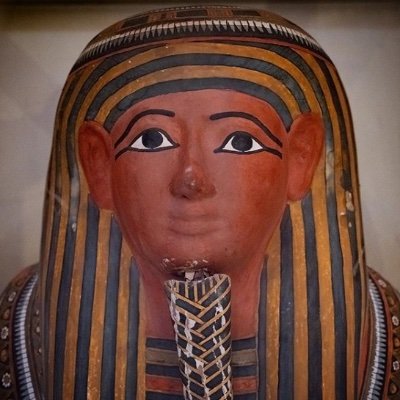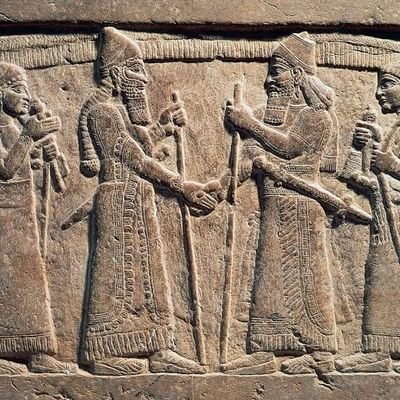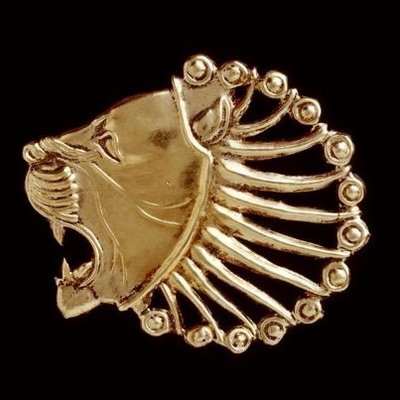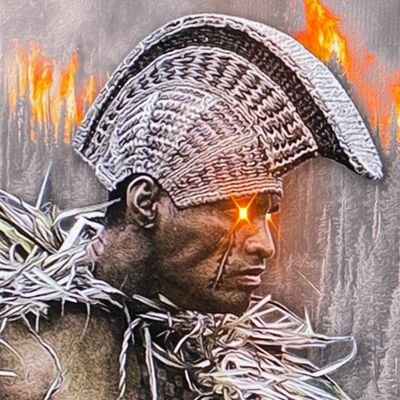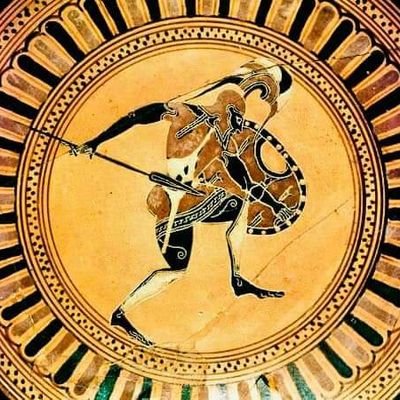Finals Update : Still 3 exams to go but the hardest ones are past me so I can finally take a day off today for the first time in a long time 😭 I am spending my precious day off absolutely exhausted on my couch, cuddling my puppies and watching Ancient Egypt documentaries 🥰
Would you spend the night with your Egyptian Queen?

💐Recently, CSCEC won the bid for the Belle Vie project by EMAAR MISR. The project is located in Egypt's Greater Cairo, New Zayed City. #CSCEC# #Egypt# 👏The project includes the construction and high-end finishing of the Belle Vie villas.




Although music existed in prehistoric Egypt, the evidence for it becomes secure only in the historical (or "dynastic" or "pharaonic") period after 3100 BC. Music formed an important part of Egyptian life, and musicians occupied a variety of positions in Egyptian society. Music found its way into many contexts in Egypt: temples, palaces, workshops, farms, battlefields and the tomb. Music was an integral part of religious worship in ancient Egypt, so it is not surprising that there were gods specifically associated with music, such as Hathor and Bes (both were also associated with dance, fertility and childbirth). All the major categories of musical instruments (percussion, wind, stringed) were represented in pharaonic Egypt. Percussion instruments included hand-held drums, rattles, castanets, bells, and the sistrum, a highly important rattle used in religious worship. Hand clapping too was used as a rhythmic accompaniment. Wind instruments included flutes (double and single, with reeds and without) and trumpets. Stringed instruments included harps, lyres, and lutes-plucked rather than bowed. Instruments were frequently inscribed with the name of the owner and decorated with representations of the goddess (Hathor) or god (Bes) of music. Both male and female voices were also frequently used in Egyptian music. Professional musicians existed on a number of social levels in ancient Egypt. Perhaps the highest status belonged to temple musicians; the office of "musician" (shemayet) to a particular god or goddess was a position of high status frequently held by women. Musicians connected with royal household were held in high esteem, as were certain gifted singers and harp players. Somewhat lower on the social scale were musicians who acted as entertainers for parties and festivals, frequently accompanied by dancers. Informal singing is suggested by scenes of workers in action; captions to many of these pictures have been interpreted as words of songs. Otherwise there is little evidence for the amateur musician in pharaonic Egypt, and it is unlikely that musical achievement was seen as a desirable goal for individuals who were not professionals. Ancient Egyptians have long valued music much in their daily life. Performing musicians and vocalists are frequently seen alongside the tunes they played or sang along to in wall reliefs and paintings found in temples and tombs. In addition to musical instruments, a wide range of items decorated with images of musical sceneries have persisted to this day. There are many statues and statuettes of musicians, and the abundance of textual material enables us to determine the performers’ names, the names of their instruments, their repertoires, and the playing styles they employed. The singer Kahay, who was praised for his lovely voice, was one of the artists whose names were also well-known. The harp was not only the most popular musical instrument in ancient Egypt, but it was also shown as one of the sacrifices made to the gods during rituals and processions. Texts indicate that it was decorated with priceless materials. An ebony, gold, and silver harp belonged to King Ahmose. A step farther was taken by Thutmose III, who ordered “a superb harp made with silver, gold, lapis lazuli, malachite, and every splendid precious stone.” Perhaps the easiest method to create music is to sing, clap your hands, or snap your fingers. However, a range of musical instruments, including idiophones and membraphones, as well as wind and stringed instruments, were already in use throughout the ancient Egypt. All of instruments used in ancient Egypt are being used today. There were wind instruments such the shepherd’s pipe, double-pipe, clarinet, flute, oboe, and trumpet, as well as percussion instruments including drums, the sistrum, rattles, tambourines, and later, bells and cymbals. Similar to today, musicians performed them individually or in an ensemble. 🎥© TikTok #archaeohistories#

As the new year begins, the New Capital CBD project meets #AI# fireworks, and the romantic vision of the city's future seems within reach. The 385.8-meter-high Iconic Tower glows brightly amid golden fireworks! 💐🎆 🤗#CSCEC# #Egypt# #firecracker# #HappyNewYear# #CBD#

The entrance to the Great Pyramid of Giza, also known as the Pyramid of Khufu or Cheops, is one of the most iconic features of this ancient structure... The Great Pyramid of Giza stands as a testament to the architectural brilliance and engineering skills of ancient Egypt. Constructed during the reign of Pharaoh Khufu around 2560 BC, this magnificent structure is the largest of the three pyramids on the Giza Plateau and one of the Seven Wonders of the Ancient World. Rising to an original height of nearly 147m, its construction involved the labor of thousands of workers over a span of about 20 years. Composed of an estimated 2.3 million blocks of limestone and granite, its precise alignment and complex internal passageways have intrigued historians and archaeologists for centuries. The Great Pyramid continues to captivate the imagination of people around the world, symbolizing the rich history and enduring legacy of ancient Egyptian civilization. The original entrance was located on the northern face of the pyramid, approximately 17m above the base. This entrance was designed as a narrow passage leading into the internal corridors and chambers of the pyramid. It is believed to have been carefully sealed after the pyramid's completion to protect the burial chamber and its treasures. In modern times, visitors do not use the original entrance. Instead, they access the pyramid through what is known as the Robbers' Tunnel, an alternate passageway created around 9th Century AD, during an attempt to uncover its secrets. This tunnel bypasses much of the original design and provides entry to the Grand Gallery and the King's Chamber. The original entrance and its placement were part of the precise architectural planning that has amazed historians and archaeologists for centuries. The Great Pyramid's design, including its intricate internal passages, remains a subject of wonder, symbolizing the incredible ingenuity of ancient Egyptian engineering. #archaeohistories#
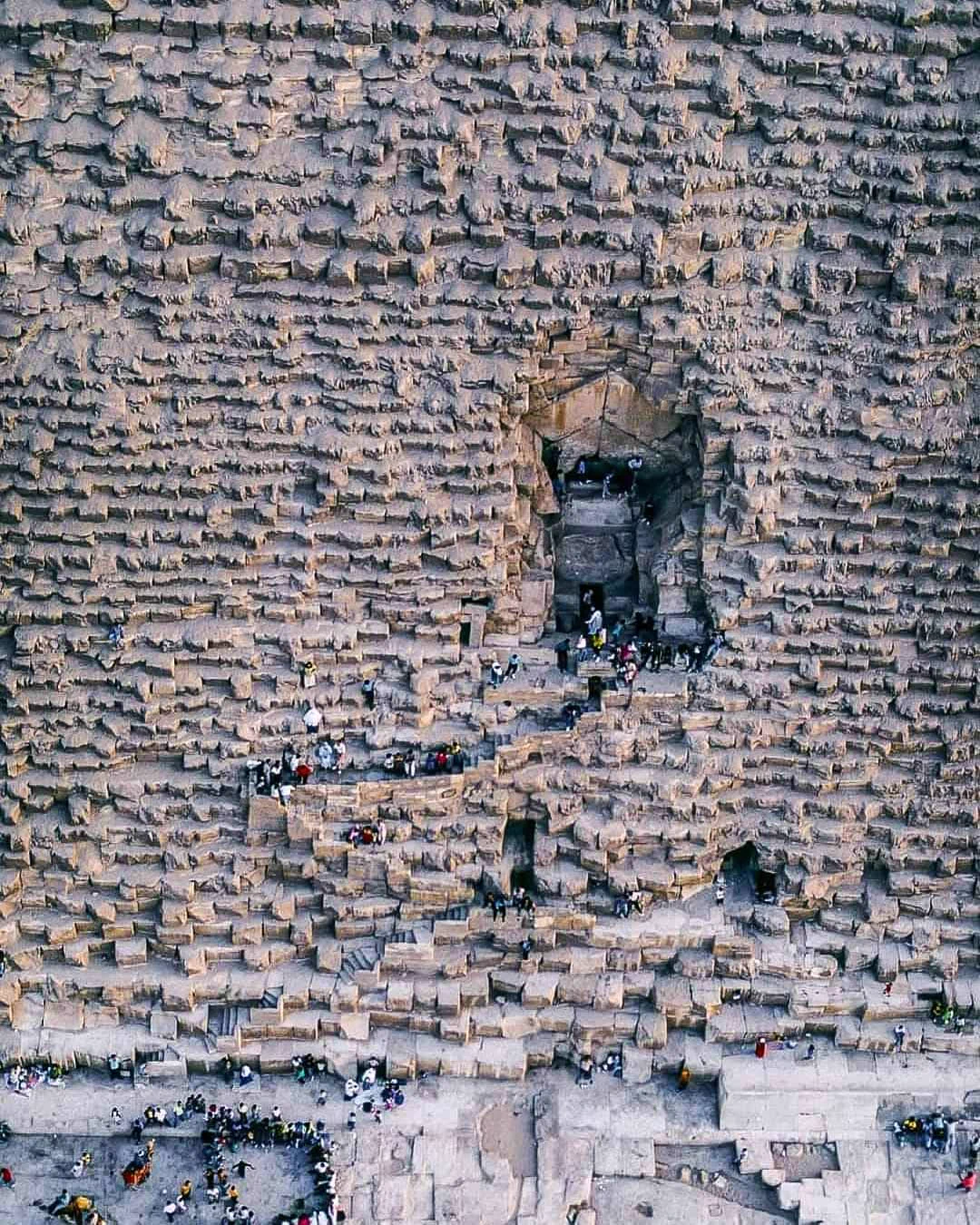
The ancient crocodile skin armor from Roman Egypt is a truly unique artifact that captures the fusion of Roman military tradition and Egyptian symbolism. Dating back to 3rd Century AD, during the Severan dynasty this ceremonial armor highlights not only the ingenuity of its craftsmanship but also the significance of the crocodile as a powerful symbol in Egyptian culture. The use of crocodile skin, a tough, exotic material—suggests that this armor was likely reserved for ceremonial purposes rather than battle. Crocodiles were deeply associated with Sobek, the Egyptian god of strength, fertility, and the Nile River. By incorporating crocodile skin into armor, the wearer would have projected an image of power, dominance, and divine protection, linking themselves to the natural and spiritual forces of the region. The intricacy of the armor’s construction demonstrates the high level of craftsmanship in Roman Egypt, where local traditions often merged with Roman tastes. The Severan dynasty was a period of cultural integration, and this armor reflects how Roman rulers embraced and reinterpreted the iconography and materials of the provinces they governed. Now housed at the British Museum, this remarkable artifact provides a rare glimpse into the ceremonial practices and visual language of Roman Egypt. It stands as a testament to the cultural and artistic blending that defined the Roman Empire’s provinces, where local traditions were incorporated into the empire’s grander narrative of power and control. The armor remains a striking reminder of how art and symbolism were used to convey authority and status in antiquity. #drthehistories#
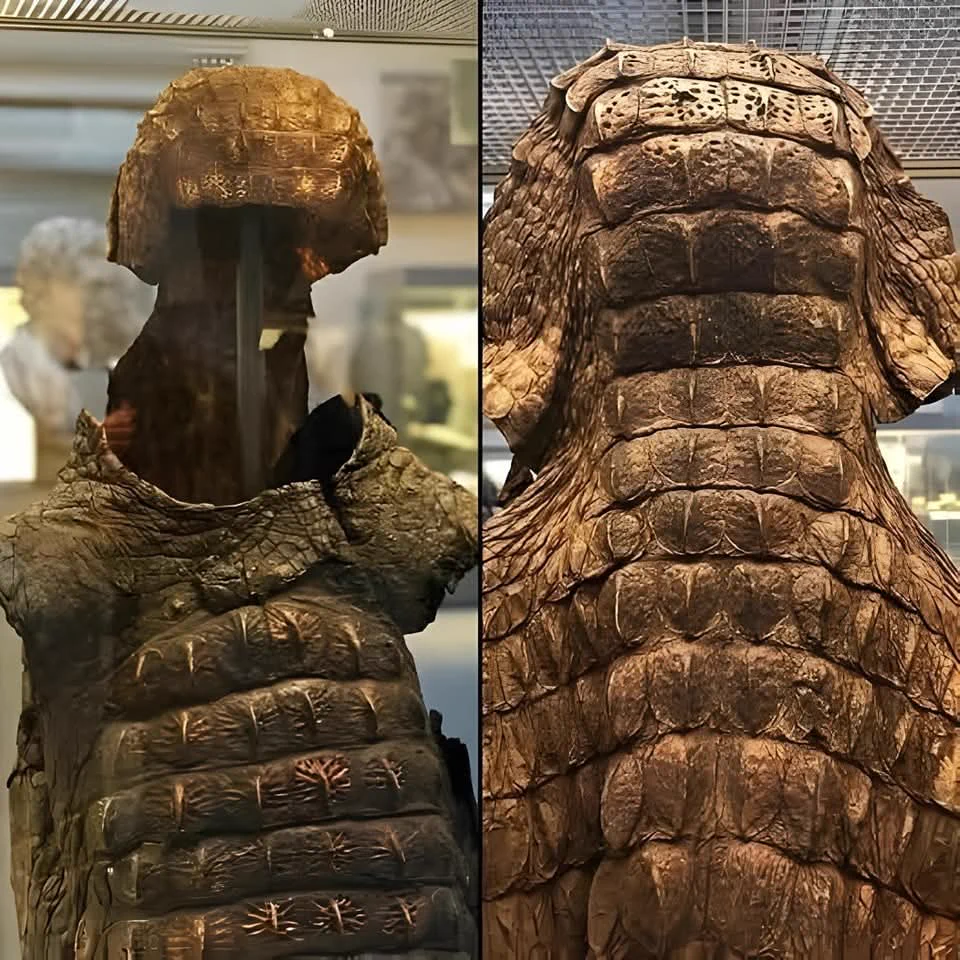
‼️Guest Announcement‼️ Our first Guest of Honor announcement for TsumiCon Las Vegas 2025, @monhannoero (Non) Internationally renowned gyaru cosplayer, Non, brings Egyptian gods to life with her stunning features, earning admiration worldwide. Her unique style and magnetic presence are bound to leave you even more enchanted in person! Get the chance to meet Non at TsumiCon! Link in Bio for tickets Or Visit the link below! >>

USAID funneled $53 million to EcoHealth Alliance, which then used U.S. taxpayer funds to support gain-of-function research on coronaviruses at the Wuhan lab—research that likely led to the creation of COVID-19. The CIA’s deception regarding COVID-19 origins becomes much clearer when considering USAID's long history of serving as a CIA front organization. With an annual budget exceeding $50 billion and activities in over 100 countries, USAID has repeatedly been linked to intelligence activities. Former USAID Director John Gilligan once admitted the agency was “infiltrated from top to bottom with CIA people,” explaining that “the idea was to plant operatives in every kind of activity we had overseas: government, volunteer, religious, every kind.” In 2013, a U.S. cable published by WikiLeaks outlined the U.S. strategy to undermine Venezuela’s government through USAID by "penetrating Chavez’s political base," "dividing Chavismo," and "isolating Chavez internationally." In 2014, the Associated Press revealed that USAID funded the creation of a Twitter-like platform intended to incite a rebellion in Cuba. USAID funding has been linked to coups in Haiti, Ukraine, Egypt, and other nations. From 2009 to 2019, USAID partnered with EcoHealth Alliance on the PREDICT program, which identified 1,200 new viruses, trained 5,000 people globally in disease detection, and enhanced 60 research labs. This partnership provided the CIA with a direct channel for embedding human assets within biological research facilities worldwide in exchange for funding and technology transfers. In 2022, Dr. Andrew Huff, a former Vice President at EcoHealth Alliance, publicly revealed Dr. Peter Daszak’s alleged ties to the CIA. The core issue? The CIA lied to the American public about COVID-19’s origins because acknowledging the truth would expose its likely role in funneling taxpayer money through USAID to finance gain-of-function research at the Wuhan lab.

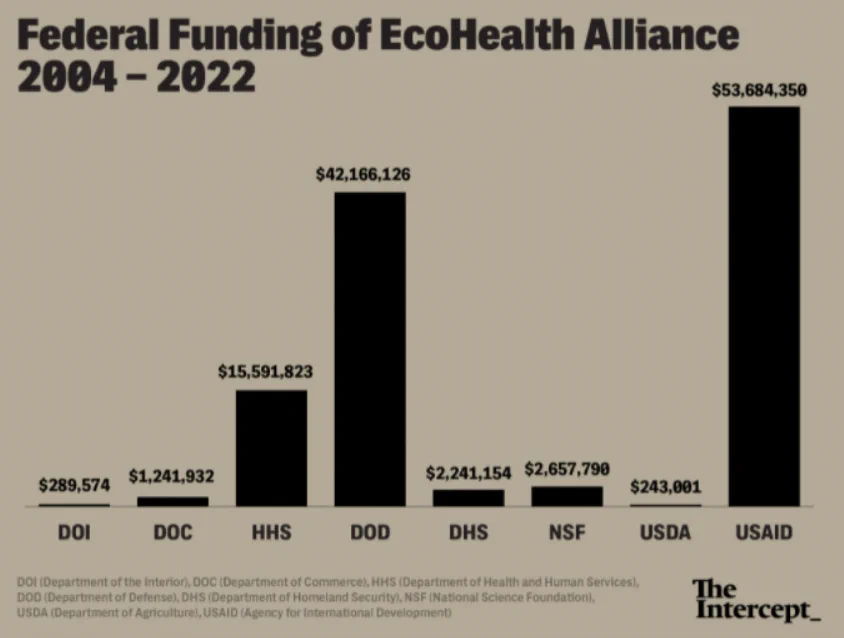
The artwork, and specifically the sculptures of ancient Greece were some of most profound, artistic statements of the human form ever to emerge from society. The dedication to detail, intricacy and exemplifying the beauty of the human body was unmatched at this time. However, like all art, it was a process of slow and deliberate evolution that created the beautiful depictions of the human body that we have all come to love, and the evolution of the man in the marble is just as intriguing as the finished product. Not much is really known about this period of Greek art, as there is no writing found from this period to describe the artwork. The sculptures created were often very small objects like chariots and horses. Many of the pieces were placed in tombs and not intended for public display. It is possible that larger sculptures made at this time were constructed from perishable materials, like wood. This period was believed to have lasted from about 900-700 BC. The archaic period was believed to have lasted from about 700- 480 BC. This era saw the first depictions of the human form. These sculptures were not the beautiful, idealized depictions that would be produced later, but instead the bodies were usually stiff and rigid. The principle sculptures at this time were given the generic term of kouros, a simplified, nude sculpture of a male youth, and kore, which was a depiction of a female youth who was normally clothed. These statues were simplified, forward facing and lacked extensive detail. They were believed to have been influenced by the cultures of Egypt and south west Asia. The kouros and kore would often be depicted smiling, which was uncommon for later sculptures. These ancient greek statues would lay the ground work for later masterpieces of Greece. The classical period is thought to have begun with the sculpture known as “The Kritios Boy” in about 480 BC. This sculpture was one of the first to depict the human form in a very realistic way. The body was sculpted to reflect accurate human proportions. The marble appears as if there are defined muscles covered by taut skin, while the sculpture itself appears to be displacing its weight on one hip. This is known as a contrapposto stance and it represented a significant innovation in the representation of human beings. While the Kritios boy is regarded as the start of the Greek classical period, it in no way encompasses the entire period. The classical period saw the rise of brilliant artists like Polyclitus, Lysippos, Scopas,and Praxiteles. They all contributed to the innovation and realism that would come to constitute the Greek classical period. It is during this time that we see an obsessive eye for detail and, at times, an exaggeration of the human body. Many idealized statues can be seen with muscle definition and limb proportions that are unattainable by a human being. Many of the portrayals are god-like creations that would have been larger than life when compared to the average citizen of ancient Greece. #archaeohistories#
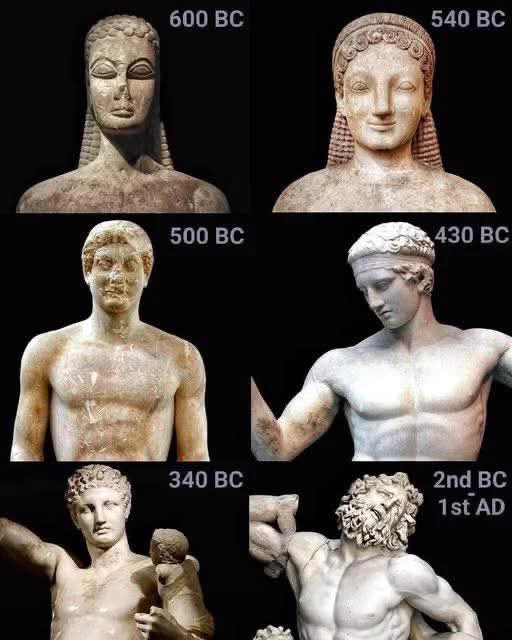
Deir el-Medina Room - Egyptian Museum of Turin, Italy 🇮🇹 The room is dedicated to the finds from the site of Deir el-Medina (near today's Luxor), the ancient village where the workers and artisans who built the Valley of the Kings lived. Its a space that well represents the ways of life, daily habits and customs of the common people at the time of the great pharaohs. 📷 : This small ostrakon, a fragment of limestone dating back to the New Kingdom, depicts a dancer. Captured in the movement of the dance, with her body softly arched backwards, while her long hair harmoniously touches the ground, she is decidedly far from the rigid poses we know of the ancient Egyptians. #archaeohistories#
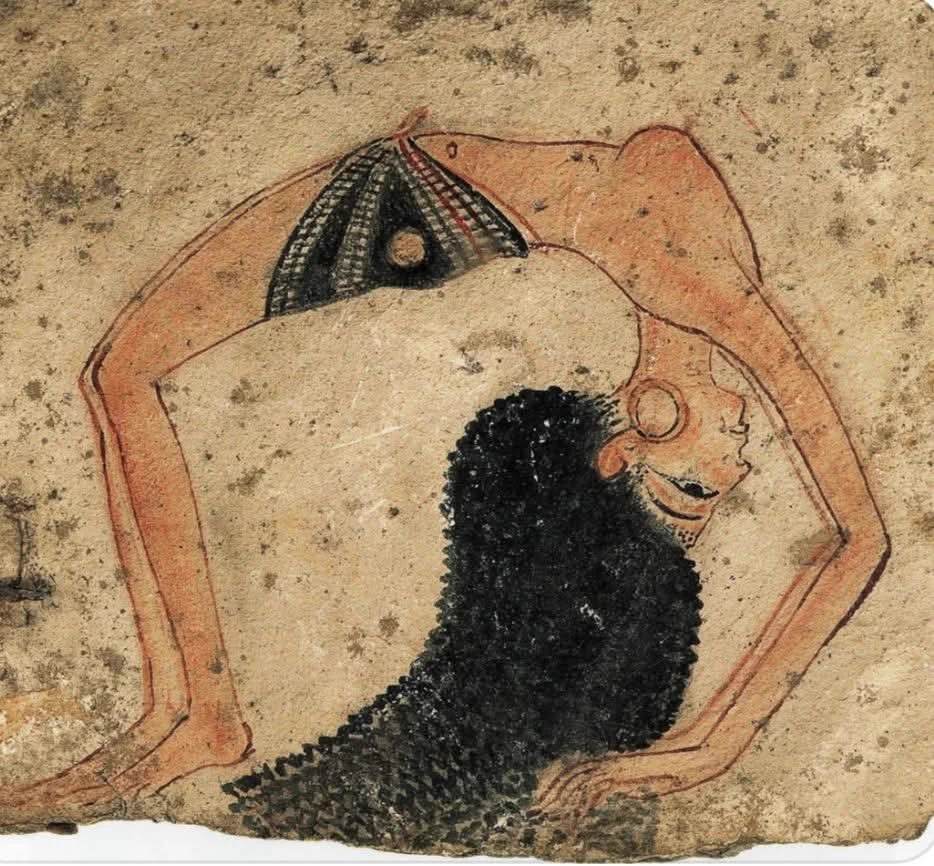
【强上00后】走开!别艹我了,我谈对象了,别闹!你拔出去我们还是朋友。 点击视频下滑观看完整版 更多精彩@llAVshequ 搜索关键词:强上00后
父母不在家,姐弟俩的胆子是越来越大了,随着老弟手上速度的加快,老姐的叫声也是越来越来,此起彼伏,估计邻居们都听到完了 点击视频下滑观看完整版 更多精彩@llAVshequ 搜索关键词:姐弟
Darkness, Gets Darker Still Excerpt from: Revelation 9 Series, Study #6# By: Chris McCann Revelation 9:2: And he opened the bottomless pit; and there arose a smoke out of the pit, as the smoke of a great furnace; and the sun and the air were darkened by reason of the smoke of the pit. In telling us the sun is darkened, God is looking at the Gospel that He has sent forth into the world. When God spoke of the “third part” of the sun being darkened, in chapter 8, it was letting us know that the Gospel light had gone out in the churches of the world. But it so happens that when the Gospel light went out within the churches of the world, God was sending forth the latter rain; the latter rain was language indicating that the Gospel was going forth in a tremendous way outside of the churches and congregations. What lies outside of the churches and congregations? It is the world – the world of which Satan is the prince. God had His people leave the churches and go into the world (which was typified when the Jews left Judea and went as captives into Babylon), so God’s people left the churches and went out into the world, while God was stretching forth His hand a second time to recover the remnant of His people; He was sending forth a second Jubilee period; the latter rain was falling all over the earth outside of the churches in the world, saving a great multitude of people. THE WORLD HAS ALWAYS BEEN A DARK PLACE Now the world has always been a “dark” place because of man’s sin. As we saw in Colossians, it is likened to a “kingdom of darkness.” In Revelation 16, where we read of seven last vials full of the seven last plagues of the wrath of God, the pouring out of those vials pictures God pouring out the “cup of His wrath” that the nations of the world (the unsaved inhabitants of the earth) must drink of during this present time period. So all seven vials typify Judgment Day, this time after the Great Tribulation, and we read in Revelation 16:10: And the fifth angel poured out his vial upon the seat of the beast; and his kingdom was full of darkness; and they gnawed their tongues for pain, Keep in mind that the beast is the name given to Satan exclusively for his rule during the Great Tribulation period and he reigned not only in the churches, but he reigned in the world in a special way that he was never previously able to do, as the world had been “given over” to iniquity and God had given up men to their sins, more and more, to prepare them for the final day of judgment. Yet, when the fifth angel, or messenger, “poured out his vial upon the seat of the beast,” (upon Satan’s place of rule in the churches and in the world) then Satan’s kingdom of darkness was now “full” of darkness “and they gnawed their tongues for pain.” Since Satan’s kingdom was always a kingdom of darkness, why did God make it a point to say that it was “full of darkness?” How can we understand that? It is the same thing God is telling us when He says that the sun and the air were (both) darkened “by reason of the smoke of the pit;” that is, Satan’s domain, as he is the prince of the power of the air, and his rule over the kingdom of the world (which now included the churches) has become particularly dark. The “world lieth in darkness,” but God at least had the Light of the Gospel shining into it in prior times. Wherever the Word of God was faithfully proclaimed and as long as it was still the day of salvation and God was still saving sinners, it was as though the light could still enter into the darkness of a city, a village or a town; and the light could enter into the darkness and shine upon individuals that were in that kingdom of darkness. There was the potential, from man’s perspective, for anyone to have been translated out of the darkness and into the kingdom of God’s dear Son. DARKNESS MADE DARKER A few chosen sinners were delivered by that light that had shined in the world, but now God has put out that light and God has made “darkness” darker; there is a “fullness” of darkness that has come upon the world. It is like the darkness that came upon Egypt – a darkness that could be felt. The world has been overcome by the “blackness of darkness” and it will continue for as long as this world continues. God will never again shine His light into the world. Remember how God puts it, in speaking of Babylon being cast down, in Revelation 18:21: And a mighty angel took up a stone like a great millstone, and cast *it* into the sea, saying, Thus with violence shall that great city Babylon be thrown down, and shall be found no more at all. And the voice of harpers, and musicians, and of pipers, and trumpeters, shall be heard no more at all in thee… And musical instruments in the Bible point to proclaiming the Gospel. And then it goes on to say: …and no craftsman, of whatsoever craft he be, shall be found any more in thee; and the sound of a millstone shall be heard no more at all in thee; And the light of a candle shall shine no more at all in thee; and the voice of the bridegroom and of the bride shall be heard no more at all in thee: You see, once the light of the candle has gone out, it has gone out for ever. It is an eternal blackness and an everlasting blackness, because what God has done in putting out the light of the Gospel has eternal consequences. This is the light that has gone out in the world. Yes, the world had always been in darkness, but there was that “candlestick” that had shined in the darkness. So, if you have a world in darkness and you put out the only light that was shining in that darkness, then you can see how the “darkness” gets darker still. That is what God is revealing and it is an awful thing. It is a horrible thing that this light of the sun is put out and even the “air” was darkened. The domain of Satan and the place where he ruled became even darker, “by reason of the smoke of the pit.”

Luxor Temple near sunset time. 我也不是只会拍色情。 #luxortemple# #luxor# #eygpt#
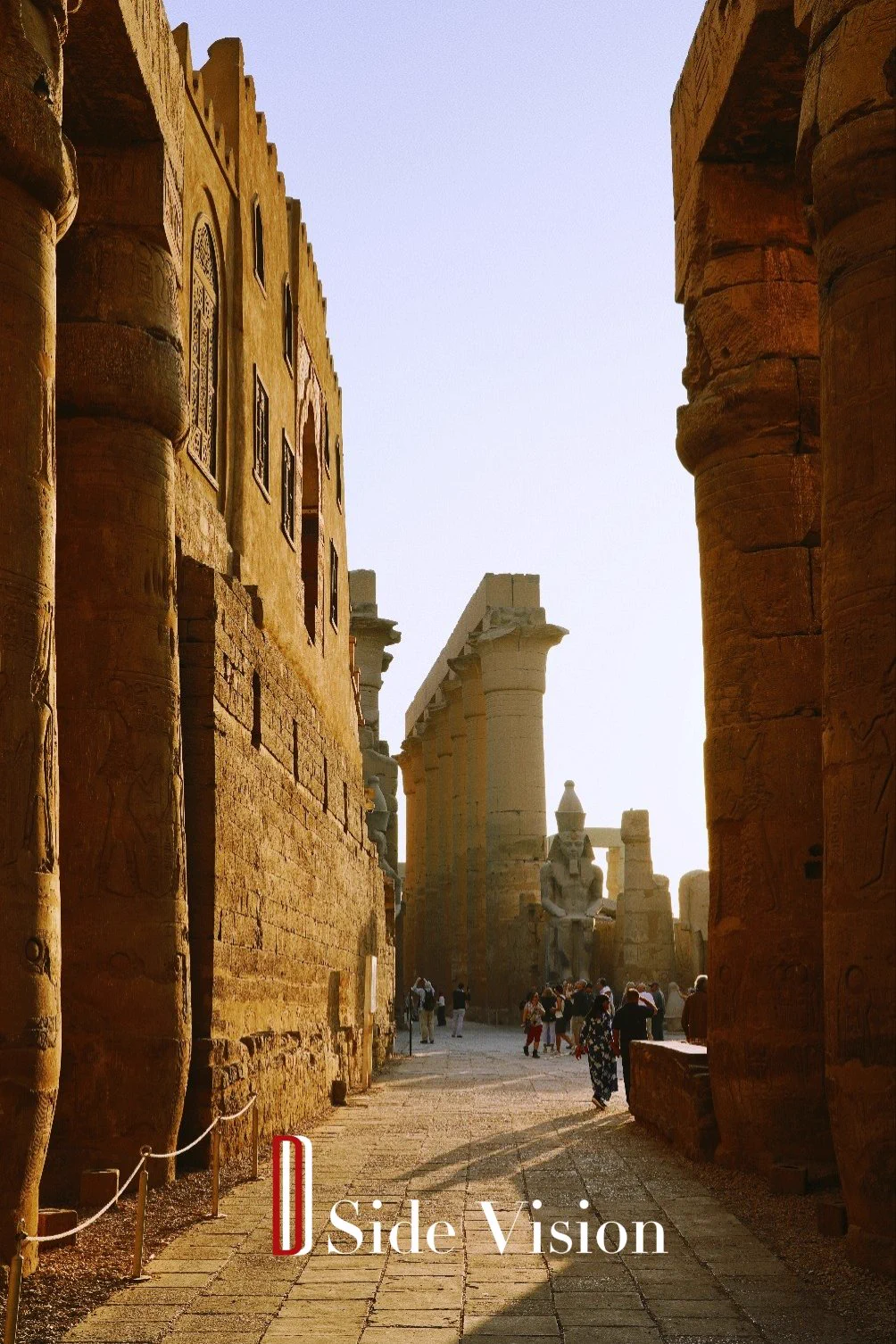
Can I be you Egyptian fantasy? 听说最近流行埃及摇,人已经在埃及,怎么摇 🤔 投稿📪 @ToBulma @ToBulaer @BulmaList @KawasawaSen


Missing when I dressed like Egyptian Goddess 👑 📢埃及摇预告来啦! 美臀你看很多,可是宝贝… 这么优秀的腘绳肌你见过吗? 投稿📪 @ToBulma @ToBulaer @BulmaList @KawasawaSen

堇荁南音/Egypt @Sheep905 @Fengsiyuan #约拍# #人体艺术# #独立摄影# #HAOTING# #摄影浩廷# #浩廷# #NSFW# #NudeArt# #NudePhotography# #ArtisticNude# #BoudoirPhotography#
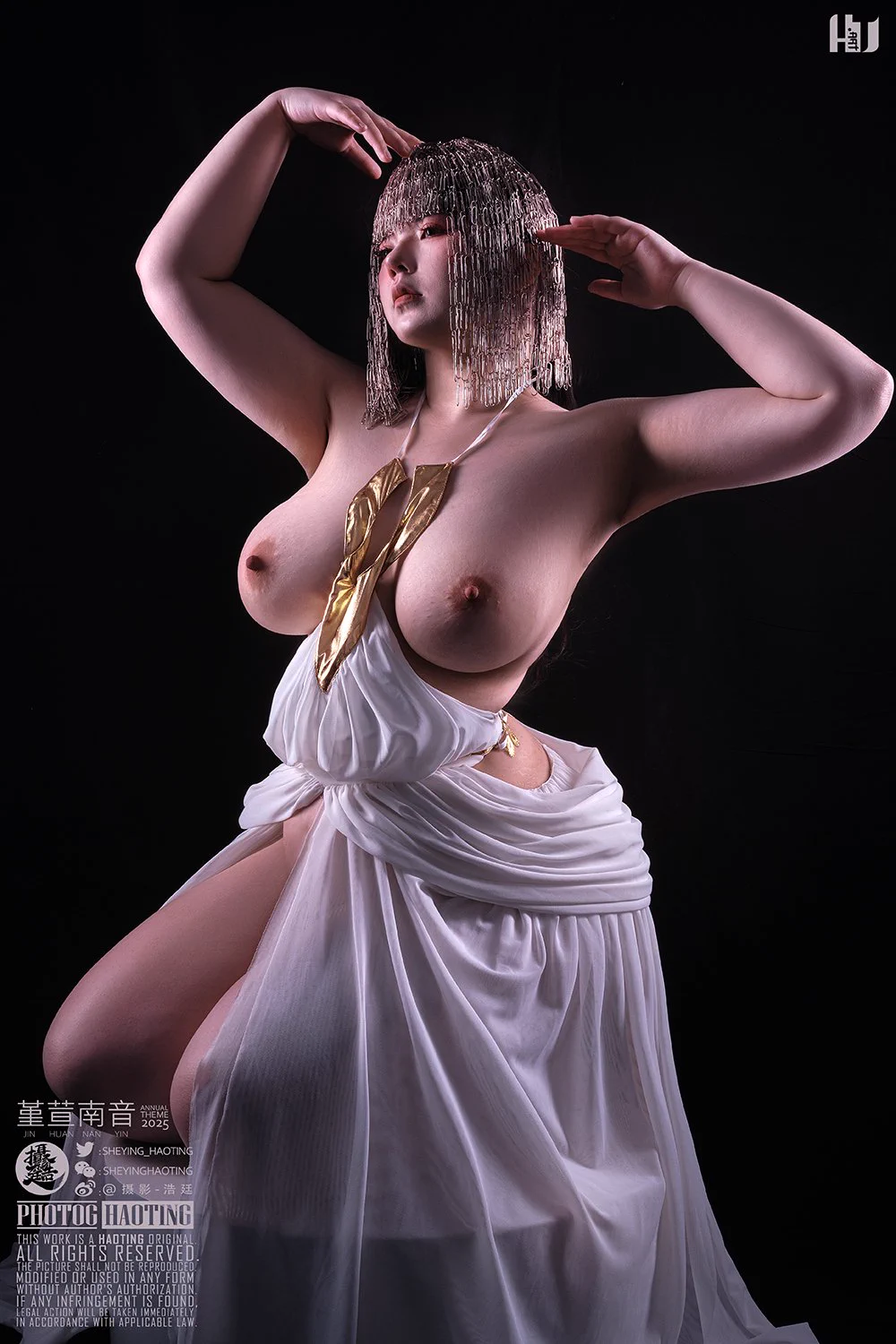
Dragon Head Mountain, located in South Sinai, Egypt 🇪🇬, a striking natural formation that resembles a colossal dragon's head emerging from the rugged landscape. Its most intriguing feature is the 'eye'—a deep cave that often flickers with a mysterious red glow, which, upon closer inspection, is revealed to be the light of a campfire inside. This eerie yet captivating sight has inspired legends and adds a mystical allure to the already breathtaking desert surroundings. #archaeohistories#
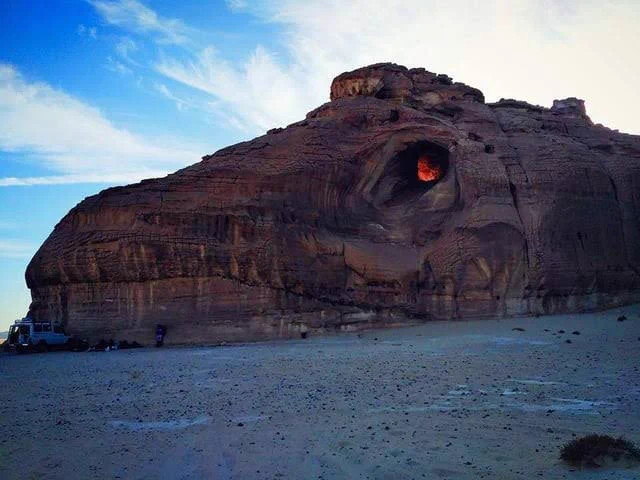
‼️STRIKING‼️ #MaestroClaudio# proudly presents the director’s cut teaser of the fantastic video featuring amazingly #pretty# #Egyptian# #Queen# @robbinrosexxx with @Mrpeepeepistol coming to in a few hours 🔥🔥🔥 👉 👉 👉 🤩🤩🤩👏👏👏😍😍😍 @PervCity_com @dpdiva_com @BTS_Jackk @bsgpr

‼️The fantastic video featuring amazingly #pretty# #Egyptian# #Queen# @robbinrosexxx with @Mrpeepeepistol is playing on NOW 🔥🔥🔥 👉 👉 👉 🤩🤩🤩👏👏👏😍😍😍 @PervCity_com @dpdiva_com @BTS_Jackk @bsgpr


